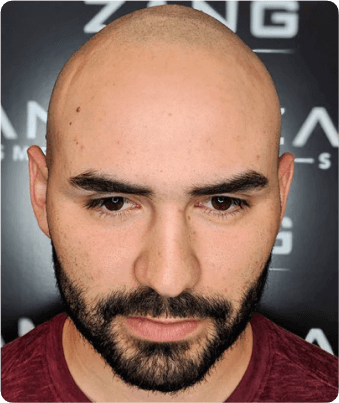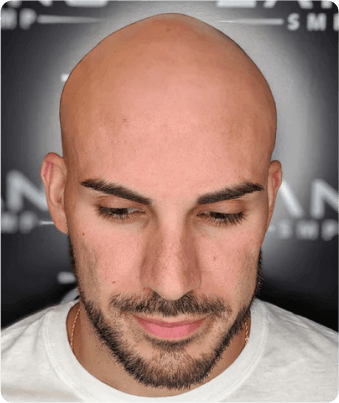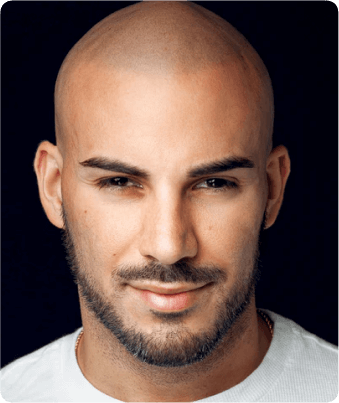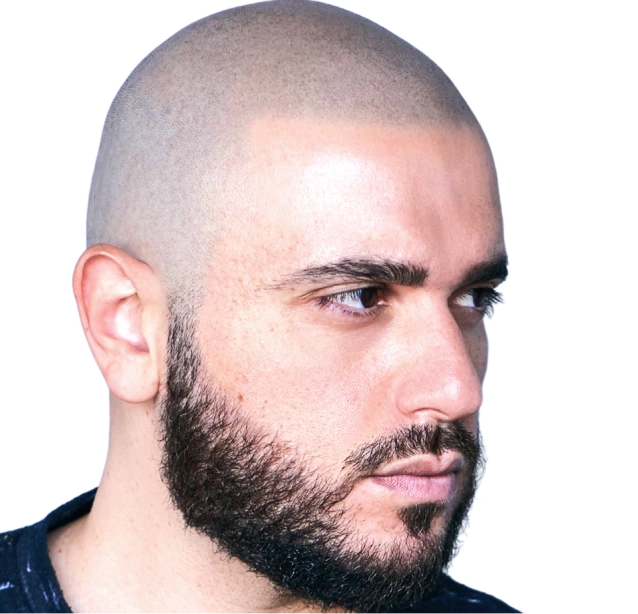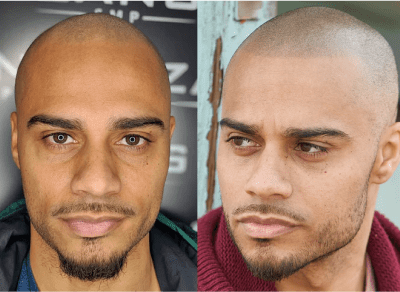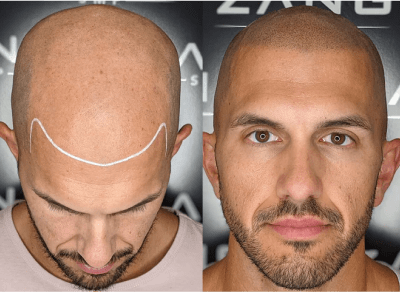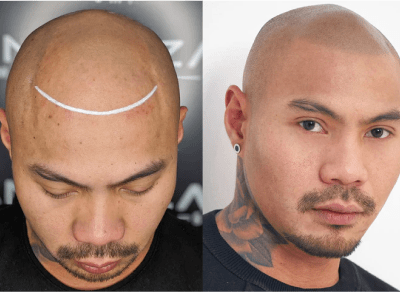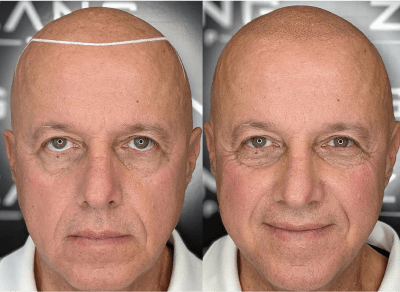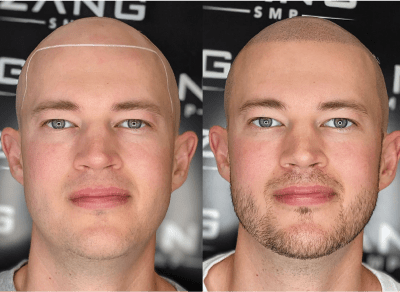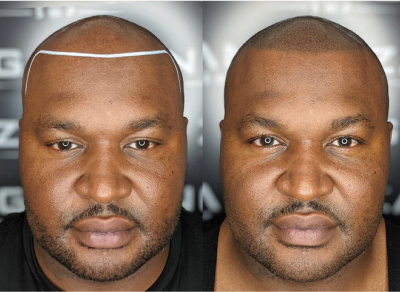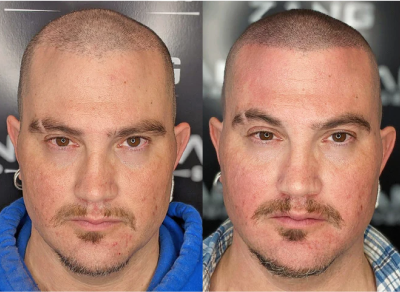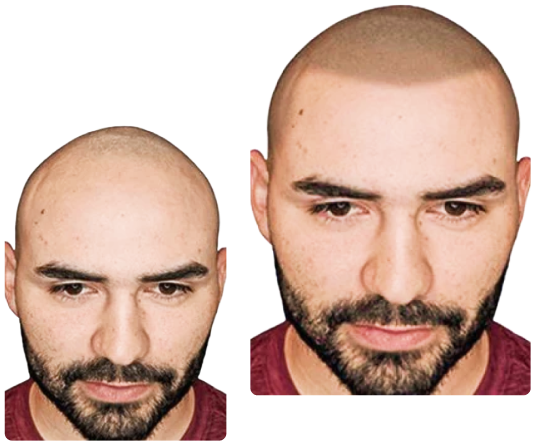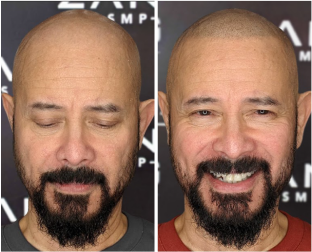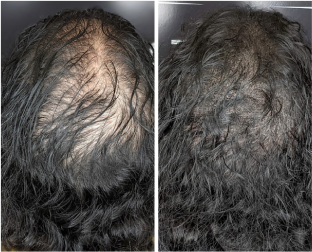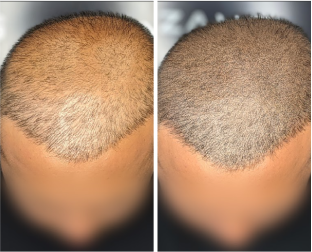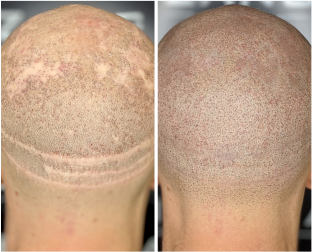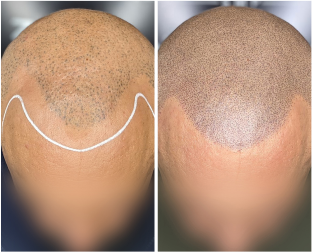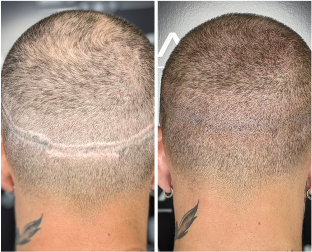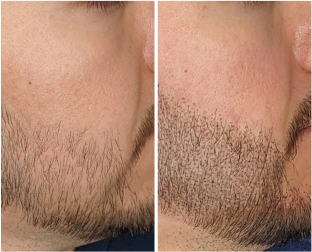How is Male Pattern Baldness Diagnosed and How Does it Influence Hair Loss?
Male pattern baldness is recognized by its distinctive pattern of hair loss, primarily around the hairline and crown, with genetics and hormones heavily influencing the condition.
Stages of Male Pattern Baldness
The Hamilton-Norwood scale is employed by hair loss specialists to determine the extent of hair loss, with stage 1 being the mildest and stage 7 indicating total baldness on the top of the head. Those with Norwood stages 1 through 3 typically experience mild to moderate recession of the hairline.
Norwood 4 to 5 patients exhibit severe hair loss in the frontal zone and marked thinning at the crown, while Norwood 6 to 7 shows near-total or total hair loss on the top of the scalp.
In some less typical cases of male pattern baldness, there may be diffuse thinning across the whole scalp without affecting the hairline or localized hair loss at the crown with no hairline recession.
Treatment For Male Pattern Hair Loss: Scalp Micropigmentation
Scalp Micropigmentation (SMP) is a non-invasive treatment for male-pattern baldness. It employs a tattooing technique on the scalp to recreate the appearance of hair follicles. SMP can restore the appearance of a full head of hair for individuals, regardless of the level of their hair loss.
Hair transplantation uses a limited amount of donor hair grafts, whereas SMP can induce hair growth and create unlimited hair density immediately with no downtime.
We use organic, plant-based pigments at Zang SMP, which are applied to the scalp. These pigments imitate hair follicles, changing your appearance from a bald head to a cropped (buzzed) style.
SMP for men offers a solution without the need for surgery or a painful hair transplant. It gives you the hair look you desire. If you have a bald head that wasn’t your choice, we can help. SMP provides the hair you need to improve your appearance.
SMP typically consists of two to three sessions. The first two sessions are done a week apart for male-pattern hair loss. If a third session is needed, it will be scheduled one to three months later.

